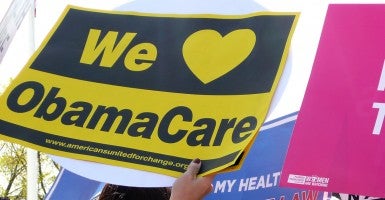There have been a number of recent news reports about additional insurers applying to offer coverage in Obamacare exchanges in 2015. Although it is too early to draw any conclusions—since this is just the beginning of a three-month process—it is still likely that at least a few more insurers will participate in the exchanges next year.
That said, here are 10 things to look for as the process plays out:
1) Some insurers didn’t apply to offer exchange coverage last year because they have a different business focus, such as offering only Medicare Advantage plans. It is likely that most of them will continue to “stick to their knitting” and not enter the exchanges this year either.
2) Last August and September, several carriers withdrew their applications to participate in the Obamacare exchanges in 2014. Those decisions, at least in part, reflected their lack of confidence in the Obama administration’s ability to implement the program. Insurers knew about the Department of Health and Human Services’ missed deadlines and unbuilt or untested infrastructure well before the general public, who learned about the problems only after the disastrous rollout last October. If those insurers believe the problems have been fixed, they will be more likely to participate next year.
3) Other insurers almost certainly concluded their best strategy was to see how their competitors did in the first year before deciding whether to participate. In the corporate world, when it comes to new technologies or markets, “leading edge” often becomes “bleeding edge.” The “second mover” can learn from the “first mover’s” experience and avoid the costs and uncertainties their competitors faced as pioneers in uncharted business territory.
4) The most likely insurers to join the exchanges in 2015 after sitting out 2014 are those with significant business in a state—but not even that is certain. For instance, in 2014, Harvard Pilgrim Health Care participated only in the exchange of its home state of Massachusetts. This year, it has applied in New Hampshire and Maine as well. It already has significant group market enrollment in both states. In contrast, Wellmark—the parent company of the Iowa and South Dakota Blue Cross plans—stayed out of both states’ exchanges in 2014. The company just announced that it would again stay out of the Iowa and South Dakota exchanges in 2015.
5) As noted, we are still in the first stage of a longer process. For the 36 state exchanges run by HHS, insures have until Friday to submit proposals to offer coverage in 2015. The next step is for insures to submit the details of their proposed exchange plan designs and rates. State and federal regulators then will review those proposed designs and rates, and insurers will have the opportunity to resubmit revised versions of any that are rejected. This process will take place through July and August.
6) The best strategy for an insurer looking to participate in the exchanges next year is to keep its options open as long as possible. Consequently, depending on the outcome of the regulatory reviews, it would not be surprising if, in the end, some insurers won’t reach agreement with regulators and decide to withdraw in late August or early September.
7) The most likely reason some insurers might withdraw their applications is disagreement with regulators over premium rates. For example, in 2014, Aetna was in more state exchanges than any other carrier (17). Yet, in August and September of 2013, Aetna withdrew its exchange applications in California, Connecticut, New York and Maryland when regulators in those states would not agree to its proposed premium rates.
8) It also is likely the issue of “narrow networks”—the practice of insurers of paying only for treatment by a limited number of physicians and hospitals that have agreed to accept lower rates—will be a bigger factor this year given all the attention it has received. Last year, only in Washington state did it become an issue in regulatory reviews. Washington’s state insurance commissioner initially denied certification to four carriers because their networks were too narrow. But the Washington Exchange Board wanted those carriers included and pressured the carriers and commissioner to reach agreements at the last minute. It would not be at all surprising to see more such disagreements this year over the adequacy of provider networks.
9) Media reports on insurance exchange participation need to be checked for accuracy and duplication, as sometimes one carrier offers plans under two or more subsidiaries. For example, this The Hill story says that Michigan will be going from 13 to 18 insurers, but the real numbers would be from nine to 14. Even if Michigan did get 14 carriers that would be in line with the 13 carriers Wisconsin had in 2014.
10) As Heritage pointed out last fall, real competition at the county level generally is much less than what is implied by the total number of carriers participating in a state’s exchange, since many carriers offer coverage in only portions of the states they serve. In 2014, more than half of the nation’s counties had only two or fewer carriers. That picture may or may not change much depending on which carriers enter which states and which local markets.































